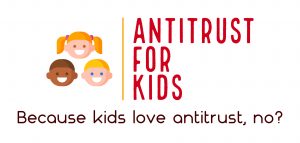Author: Luis Blanquez
Blockchain is an emerging technology that is already changing the way companies do business. But this doesn’t precludn companies using such nascent technology frot getting caught in the same old anticompetitive practices subject to the antitrust laws.
Before diving into the spectrum of anticompetitive behavior that companies using blockchain technology might get involved, let’s first explain below what distributed ledger technology (“DLT”) and blockchain mean, and what are––at least for now––the different types of blockchains.
In the last section of this article, we also analyze how antitrust group boycotts could apply in a blockchain-setting. And we provide two real life recent examples, the Bitmain case and the Ethereum Merge.
What Is Blockchain Technology?
A “blockchain” is a decentralized, electronic register in which transactions and interactions can be recorded and validated in a verifiable and permanent way. A peer-to-peer network where different users or “nodes” share and validate information in a database or network without the need of a centralized and trusted intermediary.
Records of transactions are stored along with other transactions into blocks of data that are linked to one another in a chain, creating a blockchain, which is a type of distributed ledger technology (“DLT”). Each ledger is tamper-proof and recorded using a consensus verification algorithm that encoded every prior block in the blockchain. Once a block is added to the chain, it is virtually impossible to modify. Any change would require modifying every subsequent block of data on the chain. And because each participant on the blockchain has a unique identification key, other users can instantly verify prior transactions involving that participant.
Bitcoin is the first and most prominent use of blockchain technology and has several features that distinguish it from other blockchains, including actual digital scarcity with a programmed limit of 21 million Bitcoin, forever.
With the help of Web3, blockchain technology has opened the door for companies across many industries––not just cryptocurrencies––to make more efficient, inexpensive, and secure business transactions without the need for a centralized authority. In other words, this a whole new ballgame.
Types of Blockchains: Permissionless v. Permissioned
There are two main types of blockchains.
Permissionless (public) blockchains are publicly available and fully decentralized DLTs, which means there is no central authority involved. They allow everyone to interact and participate in the validation process because they are based on open-source protocols, providing strong security. Validators must all vote to adopt the protocols and code that become the decision-making process of the blockchain. This makes it very difficult to change the behavior of the blockchain. Transactions are also fully transparent, and the nodes involved are almost always anonymous. They have, however, some technical restraints such as (i) less control over privacy (everyone has access to what is going on in the blockchain); and (ii) lower scalability and level of performance than permissioned blockchains––mainly due to the wide scope of their verification process and the amount of information they need to process.
Permissioned (private and consortium) blockchains are made by a smaller pool of validators who are partially decentralized DLTs. Only few known (as opposed to anonymous) and previously identified parties can access the ledger and participate in the validation process. Participants need permission to have a copy of the ledger. Thus, even though there is no central authority involved, a short group of participants validate and share the data relevant to transactions. This means less transparency and a higher risk of collusion and abuse of market power because only few nodes manage the transaction verification and consensus process. On the flip side, privacy is stronger, and they are more scalable and customizable.
This distinction is important to identify and analyze antitrust issues, depending on the type of blockchain involved. But the more the blockchain technology develops, the more those differences have become blurred. A combination of small permissioned blockchains with more open, wider, and decentralized ones (although sometimes still using encrypted transactions) had become a common trend. Interoperability between blockchains and existing network externalities are both expected to keep verification prices down while increasing security. In the end, the final configuration of a blockchain and its software code will depend on the strategy and business model selected, which is something that needs to be analyzed on a case-by-case basis, considering the industry and applications involved.
The same applies to the enforcement of antitrust laws to this new technology. That’s why it is essential that companies using blockchain technology have a clear antitrust compliance policy in place and train their key employees accordingly. This is particularly important for those involved with the business strategy of the company and the ones interacting on a regular basis with competitors.
Group Boycotts: The Bitmain case and the Ethereum “Merge”
Private blockchain participants may breach antitrust rules if they exclude competitors from the blockchain without a legitimate business justification. Those who control the blockchain may limit potential competitors access to the chain or may not allow them to conduct transactions therein. This is called a group boycott or a concerted refusal to deal—where multiple entities combine to exclude or otherwise inhibit another party. When that “concerted” boycott involves market power or horizontal control over an essential facility or resource, courts typically always analyze it under the “per se” rule.
 The Antitrust Attorney Blog
The Antitrust Attorney Blog











